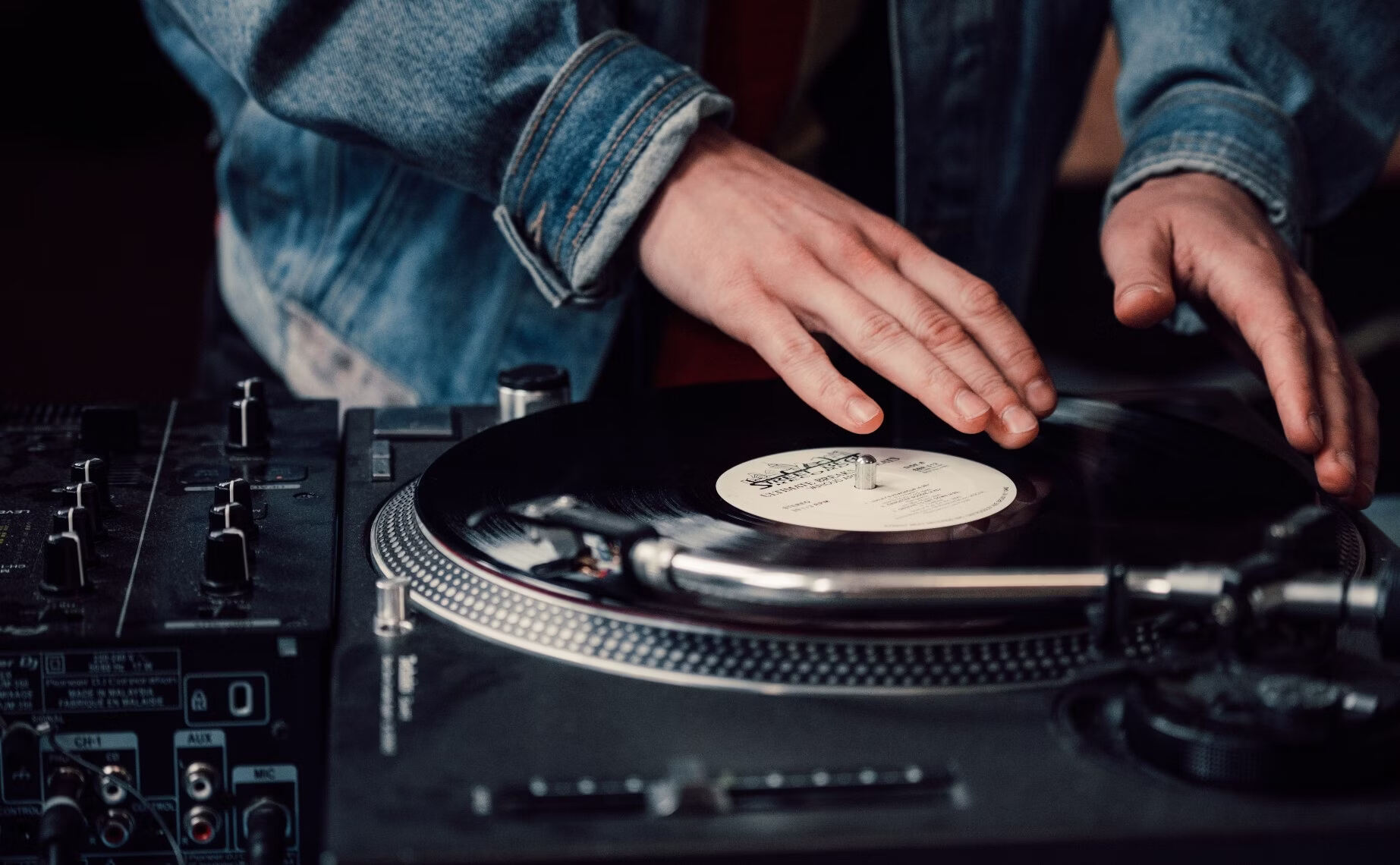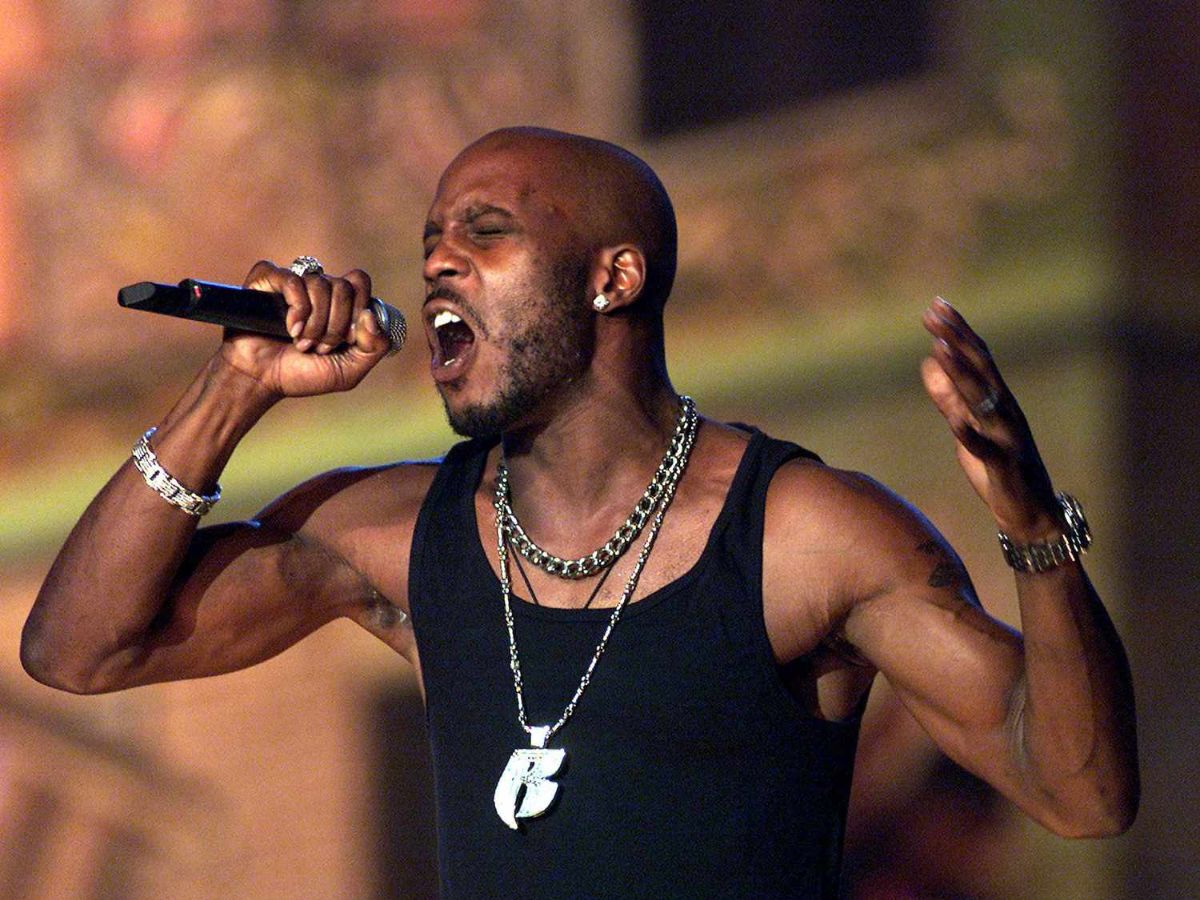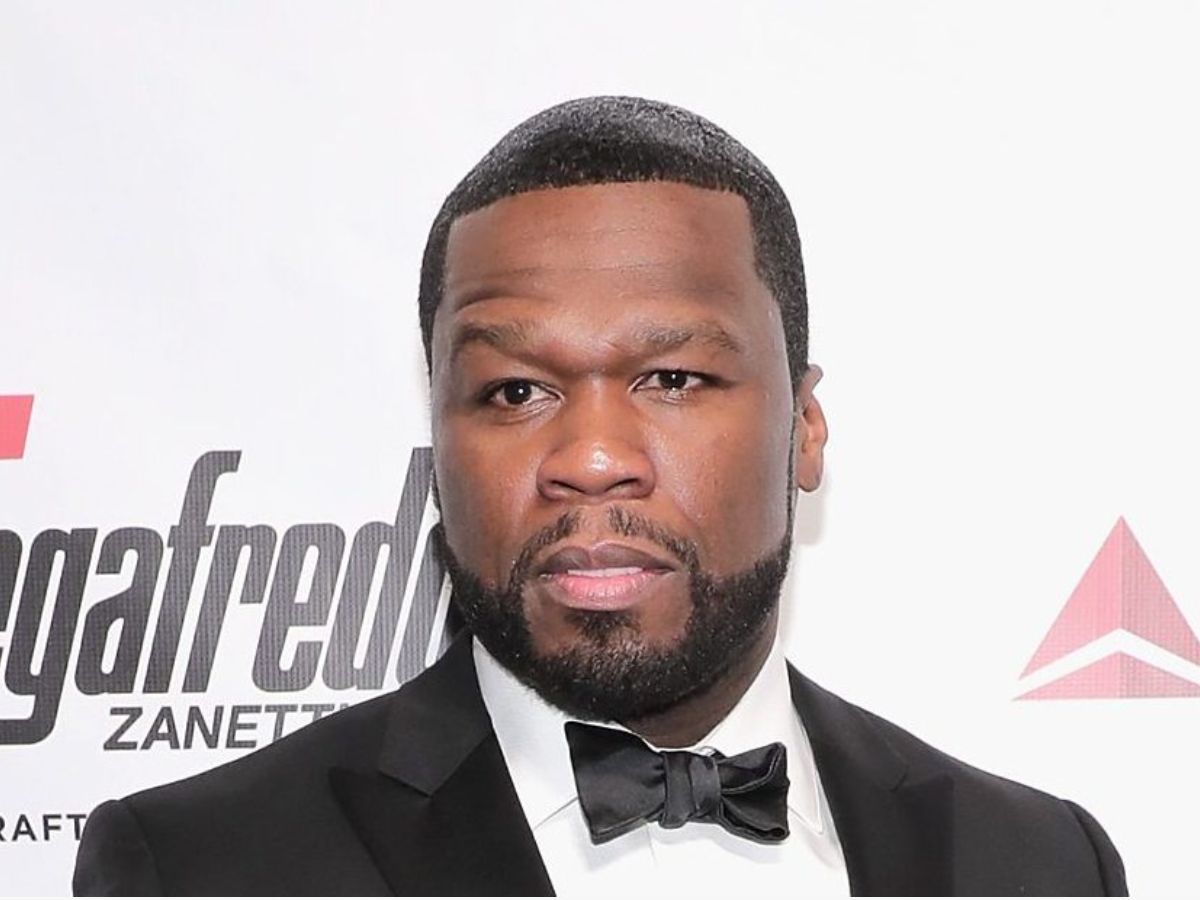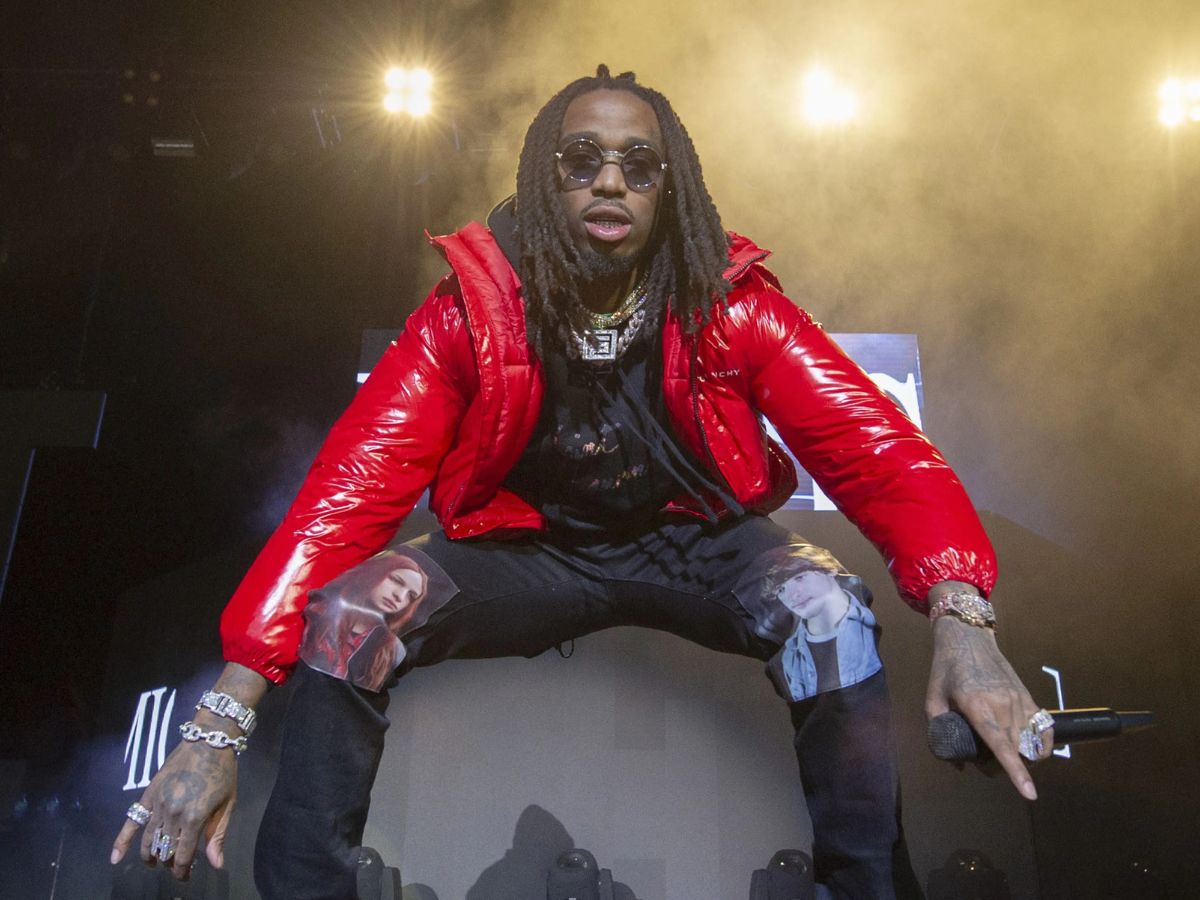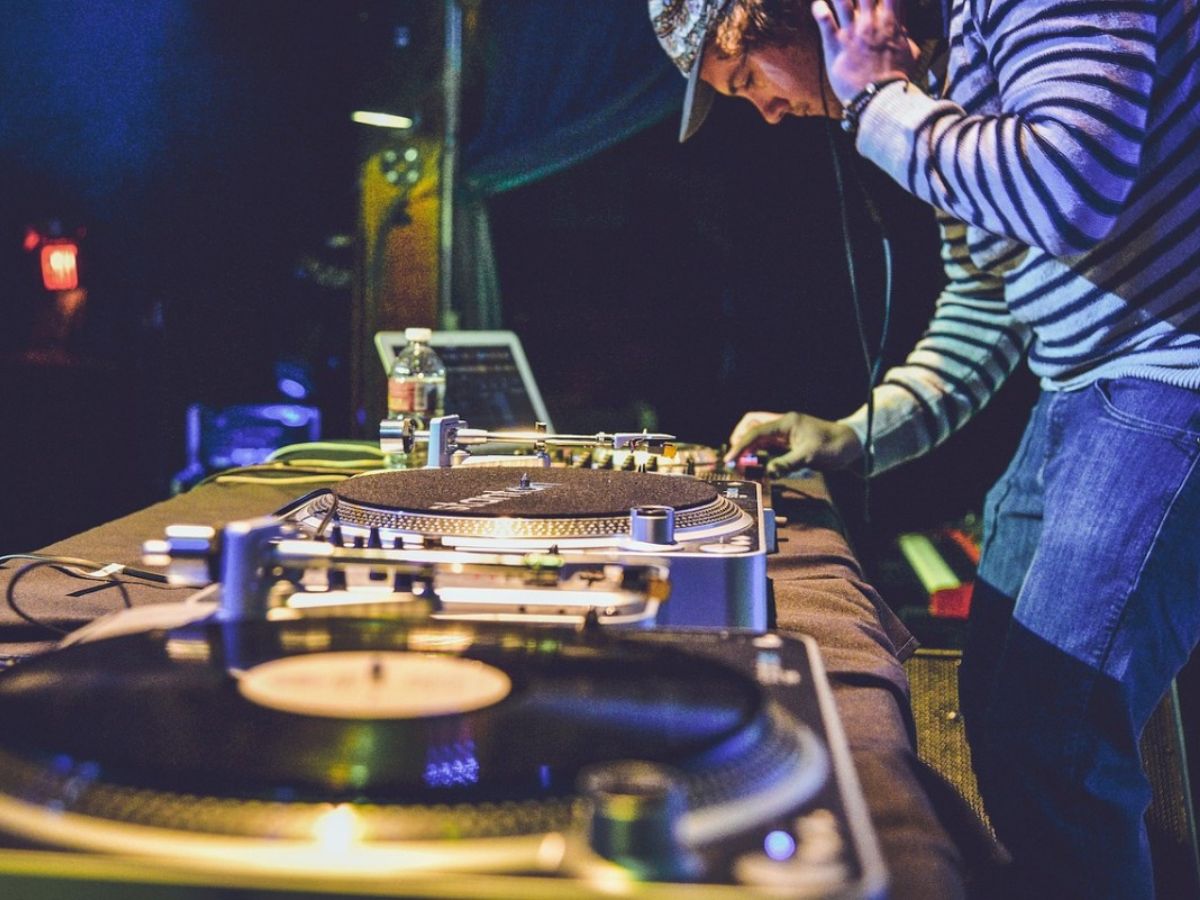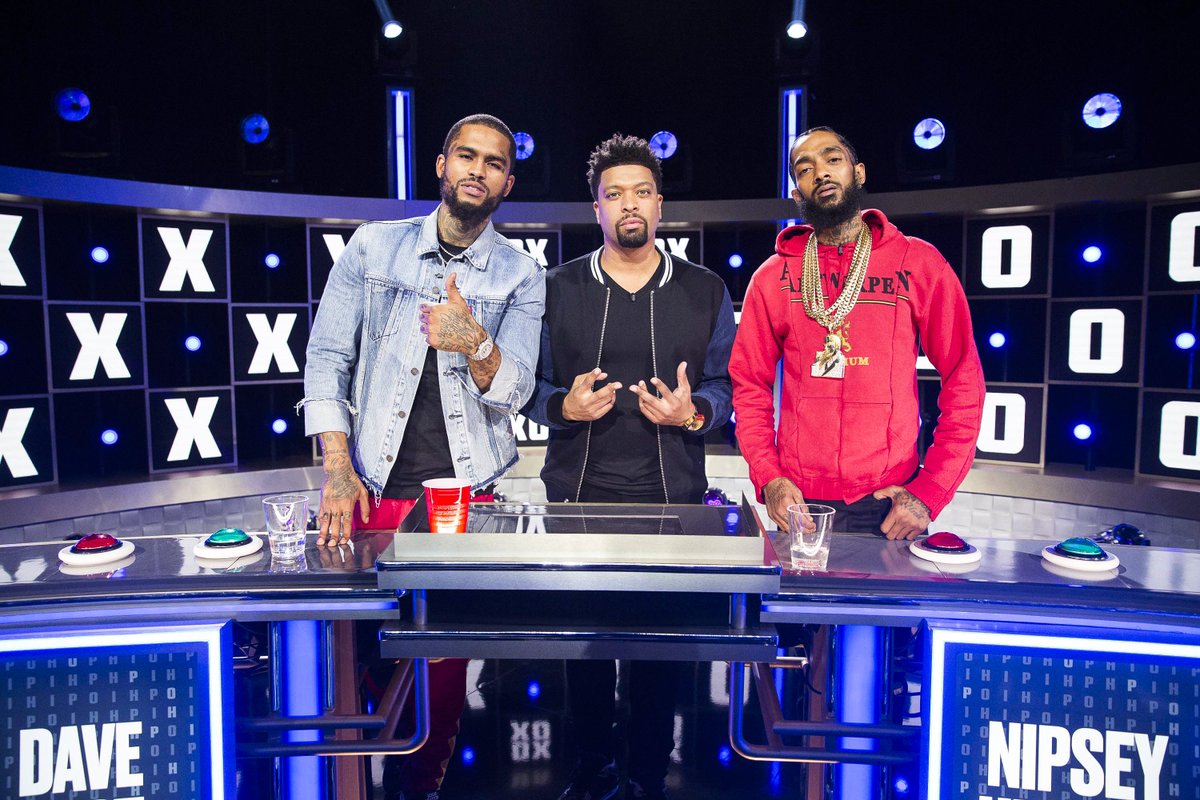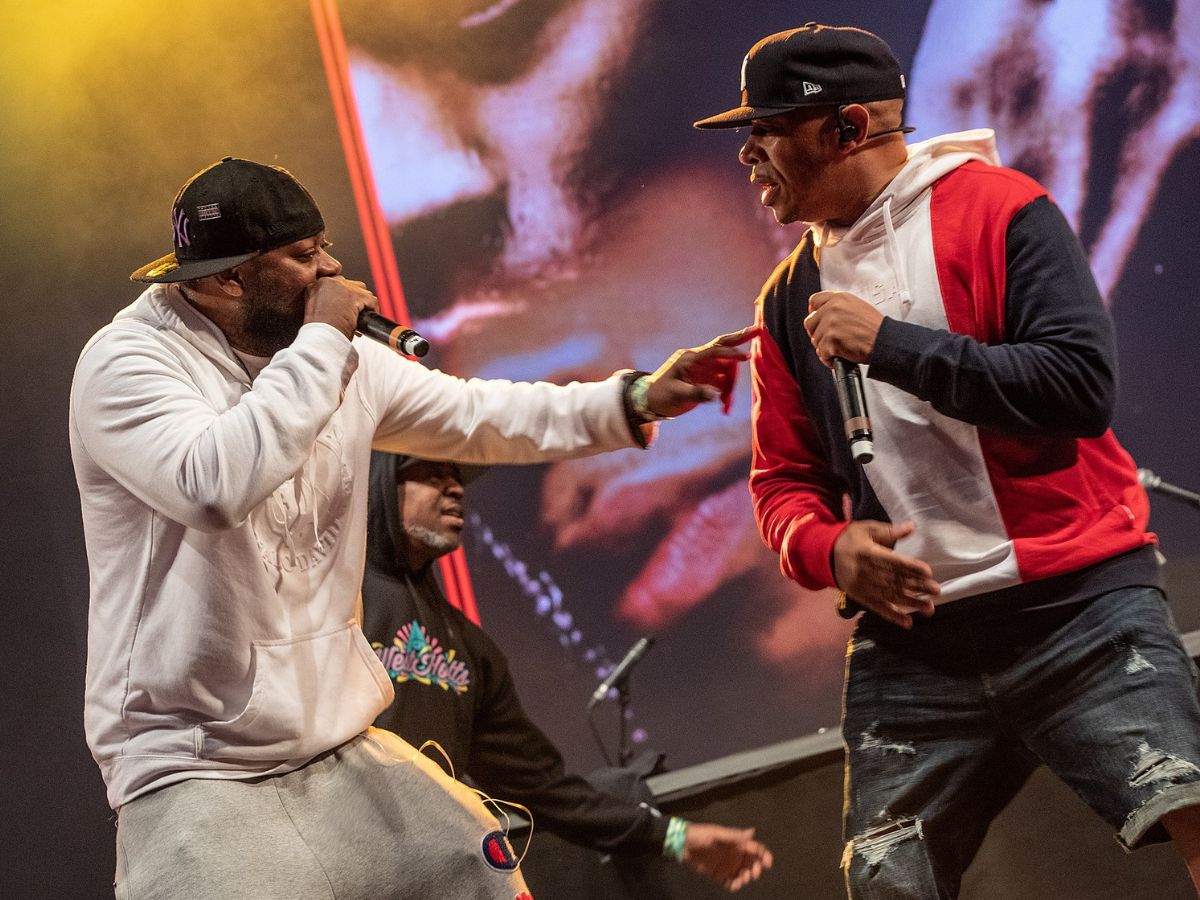

Hip Hop
What Is Hip Hop About
Modified: March 3, 2024
Discover the essence of Hip Hop culture and its unique blend of music, dance, and style. Explore the origins, evolution, and impact of this influential art form.
(Many of the links in this article redirect to a specific reviewed product. Your purchase of these products through affiliate links helps to generate commission for AudioLover.com, at no extra cost. Learn more)
Table of Contents
Introduction
Hip hop, a cultural movement that emerged in the 1970s in the Bronx, New York City, has evolved into a global phenomenon. It encompasses various artistic expressions, including music, dance, visual art, and fashion. What started as a form of African-American and Afro-Caribbean creativity and self-expression has now become one of the most influential and dominant genres in popular culture.
Characterized by its rhythmic beats, catchy melodies, and thought-provoking lyrics, hip hop has become a platform for artists to voice their experiences, opinions, and social commentary. It is a genre that resonates with millions of people around the world, transcending boundaries of geography, race, and language.
The historical origins of hip hop can be traced back to the marginalized communities of the South Bronx, where DJs like Kool Herc pioneered the use of two turntables to create a seamless blend of beats and rhythms. This practice, known as “sampling,” laid the foundation for the creation of hip hop music. The movement expanded rapidly, with the introduction of MCing (rapping), breakdancing, and graffiti art.
Over the years, hip hop has evolved and diversified, giving rise to sub-genres such as gangsta rap, conscious rap, trap, and mumble rap. It has also become a platform for social and political activism, with artists using their music as a tool to address issues of inequality, racism, and police brutality.
In this article, we will delve deeper into the various elements of hip hop culture and explore its impact on music, dance, visual art, fashion, and society. We will also discuss the criticism and controversies that have surrounded hip hop throughout its history.
So, whether you’re a long-time hip hop enthusiast or new to the genre, join us as we embark on a journey to understand what hip hop is truly about and why it continues to captivate and inspire millions of people worldwide.
Historical Origins of Hip Hop
The roots of hip hop can be traced back to the 1970s in the Bronx, New York City. It emerged as a creative outlet and form of expression for the African-American and Afro-Caribbean communities that faced social and economic hardships.
In the early days, hip hop was primarily a phenomenon centered around block parties and community gatherings. DJs like Kool Herc, Afrika Bambaataa, and Grandmaster Flash played a crucial role in its development. They pioneered the use of turntables and mixers to create seamless transitions between songs, known as “breaks.” This practice formed the foundation of hip hop music, with DJs employing their skills to keep the crowd energized and engaged.
Alongside the DJs, MCs (Masters of Ceremonies) began emerging as vocalists who would interact with the audience and deliver improvisational rhymes over the beats created by the DJs. This technique, known as rapping, became an integral part of hip hop and allowed artists to express their thoughts, experiences, and social commentary through lyrical storytelling.
Another significant element of hip hop culture is breakdancing, also known as b-boying or b-girling. Originating from the dance moves performed during the “breaks” in DJ sets, breakdancing quickly became a prominent aspect of hip hop. It involved acrobatic moves, intricate footwork, and dynamic body movements, often performed in a competitive and vibrant atmosphere.
Graffiti art also played a crucial role in the development of hip hop. Rising from the walls and trains of the Bronx, graffiti became a way for artists to make their mark and visually represent the culture. Elaborate lettering, vibrant colors, and intricate designs were used to convey messages, showcase individuality, and create a sense of identity within the hip hop community.
As hip hop gained momentum and popularity, it began to spread beyond the boundaries of the Bronx and reached other boroughs of New York City. The music, dance, and visual art associated with hip hop resonated with marginalized communities nationwide, offering a means of creative expression and a platform for empowerment.
From its humble beginnings in the Bronx, hip hop has now become a global movement, influencing and inspiring artists and communities all over the world. It continues to evolve and adapt, reflecting the diverse experiences and voices of its practitioners. Hip hop’s historical origins serve as a reminder of its roots and the empowerment it brings to those who embrace its artistic and cultural elements.
Elements of Hip Hop Culture
Hip hop culture comprises various artistic elements that come together to create a vibrant and dynamic movement. These elements include music, dance, visual art, and fashion, each playing a unique role in shaping the culture and its identity.
1. Music: At the core of hip hop culture is the music itself. Characterized by its rhythmic beats, catchy melodies, and powerful lyrics, hip hop music has become a global phenomenon. DJs and producers use sampling techniques to create the signature sounds of hip hop, blending different genres and creating unique compositions. The lyrics, delivered through rap, provide a platform for artists to express their thoughts, share their stories, and address social issues.
2. Dance: Breakdancing, also known as b-boying or b-girling, is one of the most prominent dance forms within hip hop culture. It involves a combination of acrobatic moves, footwork, and body control. Breakdancing is often seen as a form of self-expression, storytelling, and physical mastery. Other forms of dance, such as popping, locking, and krumping, have also become popular within the hip hop community.
3. Visual Art: Graffiti art emerged alongside hip hop music as a visual representation of the culture. Highly stylized lettering, intricate designs, and vibrant colors are used to create visually striking murals and tags. Graffiti art serves as a form of self-expression, identity, and activism within the hip hop community, transforming public spaces into artistic canvases.
4. Fashion: Hip hop fashion is known for its distinct style. From baggy jeans, oversized t-shirts, and sneakers to accessories like chains, hats, and sunglasses, fashion in hip hop culture is often a reflection of individuality and personal expression. It has influenced mainstream fashion trends and has been instrumental in shaping streetwear and urban fashion.
These elements of hip hop culture are interwoven and interconnected, creating a rich tapestry of art, self-expression, and social commentary. They provide a platform for artists and individuals to tell their stories, challenge societal norms, and bring about change. Through music, dance, visual art, and fashion, hip hop culture has transcended boundaries and continues to inspire and empower people around the world.
Music in Hip Hop
Music is the beating heart of hip hop culture. It serves as a powerful medium of expression, allowing artists to share their stories, shed light on social issues, and captivate audiences with their unique sounds. Hip hop music has evolved and diversified over the years, giving rise to various sub-genres and styles.
At its core, hip hop music is driven by rhythmic beats and intricate sampling techniques. DJs and producers play a pivotal role in creating the distinctive sounds that define the genre. They manipulate vinyl records, mix and scratch samples, and layer different sounds to craft the foundation of a hip hop track.
One of the defining features of hip hop music is rap. Known for its rapid and rhythmic delivery, rap involves the art of verbal wordplay, storytelling, and lyrical prowess. Rappers use their lyrics to communicate their thoughts, experiences, and perspectives on a wide range of topics including social injustice, personal struggles, and cultural identity.
Throughout the history of hip hop, there have been influential artists who have shaped the genre. From pioneers like Grandmaster Flash and Tupac Shakur to contemporary artists like Kendrick Lamar and Cardi B, each artist brings their unique style and voice to the hip hop landscape.
Gangsta rap emerged in the late 1980s and early 1990s as a sub-genre of hip hop music. Characterized by its gritty and often controversial lyrics, gangsta rap explores themes of street life, violence, and social inequality. Artists such as N.W.A., Ice-T, and Dr. Dre brought attention to the realities of the inner-city experience, sparking debates and conversations about race, poverty, and police brutality.
Conscious rap is another significant sub-genre within hip hop. Artists like Common, Mos Def, and Lauryn Hill use their music to address social issues, promote empowerment, and encourage critical thinking. Conscious rap often focuses on themes such as racial inequality, systemic oppression, and the pursuit of social justice.
Trap music, originating from the Southern United States, has gained immense popularity in recent years. It is characterized by its heavy 808 bass lines, rapid hi-hats, and catchy melodies. Artists like Future, Migos, and Travis Scott have embraced trap music, creating energetic and infectious tracks that dominate the airwaves and club scene.
Hip hop music has transcended boundaries of language and culture, reaching global audiences and creating a sense of unity. Artists from all corners of the world now contribute to the hip hop movement, infusing their own cultural elements and experiences into the genre.
Music in hip hop is constantly evolving, reflecting the changing times and the voices of the artists who shape it. Whether it’s through rap, beatmaking, or production, hip hop music continues to push boundaries, challenge norms, and provide a platform for artists to make their mark on the world.
Rap as a Form of Expression
Rap, a fundamental element of hip hop culture, has emerged as a powerful form of expression. With its rapid delivery, rhythm, and poetic wordplay, rap allows artists to convey their thoughts, experiences, and social commentary in a unique and engaging way.
Rap is more than just rhyming words together; it is a form of storytelling. Artists use their lyrical prowess to paint vivid pictures and share narratives that reflect their reality. Through their verses, rappers can address a wide range of topics, from personal struggles and triumphs to social issues and political activism.
One of the notable characteristics of rap is its focus on wordplay. Rappers employ various techniques such as metaphors, similes, alliteration, and clever word associations to engage listeners and create memorable lines. The skillful use of wordplay adds depth and layers of meaning to their lyrics, inviting listeners to interpret and analyze their messages.
Rap is also a means to address social and cultural issues. Many artists use their platform to shed light on injustices, racism, inequality, and other pressing matters. They serve as storytellers, giving a voice to the voiceless and representing the marginalized communities from which hip hop originated.
Through rap, artists often share their personal experiences, allowing listeners to connect with their stories on a deeper level. It provides a platform for self-expression, enabling artists to unveil their vulnerabilities, express their emotions, and share their life journeys. Rap showcases the power of honesty and authenticity, as artists open up about their triumphs and struggles, making their music relatable and empowering.
Rap battles, another component of the rap culture, provide an avenue for artists to engage in lyrical combat. With sharp witticisms and clever comebacks, rappers compete in a contest of creativity and verbal skill. These battles not only showcase the prowess of the artists involved but also demonstrate the power of rap as a form of expression and entertainment.
The impact of rap goes beyond the music itself. It has influenced fashion, language, and popular culture. From the clothing style and slang used in rap lyrics to the adoption of rap techniques in various musical genres, its influence is pervasive. Rap has become a vehicle for cultural exchange and a catalyst for social change on a global scale.
Through rap, artists can challenge stereotypes, challenge the status quo, and champion important causes. It has the power to spark conversations, raise awareness, and incite positive change in society. From its humble beginnings in the South Bronx to its global reach, rap has transformed the way we perceive and appreciate music as a form of artistic expression.
Dance and Choreography in Hip Hop
Dance is an integral part of hip hop culture, with its energetic movements and captivating choreography adding another layer of expression and creativity to the genre. Hip hop dance encompasses a variety of styles and techniques, each with its own distinct characteristics.
Breakdancing, also known as b-boying or b-girling, is one of the most iconic forms of hip hop dance. It emerged alongside the music in the 1970s, with dancers incorporating acrobatic moves, intricate footwork, and dynamic body movements into their routines. Breakdancing is characterized by its floor work, power moves, freezes, and spins, often performed in a circular space known as a “cypher.”
Popping and locking are two popular funk styles that originated on the West Coast of the United States. Popping involves quick muscle contractions and releases, creating a popping effect in different parts of the body. Locking, on the other hand, utilizes sudden pauses and exaggerated movements to create a distinct robotic and mechanical aesthetic.
As hip hop continued to evolve, new dance styles emerged, such as krumping and urban choreography. Krumping, a highly energetic and expressive style, was developed in South Central Los Angeles as a form of street dance. It is characterized by aggressive, exaggerated movements, intense facial expressions, and freestyle improvisation.
Urban choreography is a fusion of different dance styles, including hip hop, jazz, contemporary, and street dance. It combines intricate footwork, body isolations, and smooth transitions to create visually stunning and captivating performances. Urban choreography is often seen in music videos, stage performances, and dance competitions.
Hip hop dance is not only a form of entertainment but also a means of self-expression and storytelling. Dancers express their emotions, convey narratives, and interpret the music through their movements. It allows individuals to showcase their creativity, skills, and individuality, while also fostering a sense of community and camaraderie among dancers.
In addition to individual freestyle dancing, choreography plays a significant role in hip hop. Choreographers create routines that synchronize movements, embody the essence of the music, and convey a specific message or theme. These choreographed performances are often seen in music videos, live performances, and dance competitions.
Throughout the years, hip hop dance has gained mainstream recognition and has been incorporated into various forms of media, including television shows, movies, and commercial advertisements. It has become a global phenomenon, with hip hop dance studios, workshops, and dance community events flourishing worldwide.
Hip hop dance not only serves as a form of entertainment but also as a means of empowerment, resilience, and cultural representation. It celebrates individuality, encourages creativity, and provides a platform for artists to express themselves through movement. With its infectious energy and captivating performances, hip hop dance continues to inspire and captivate audiences around the world.
Graffiti and Visual Art in Hip Hop
Graffiti art has long been an integral part of hip hop culture, serving as a visual representation and form of self-expression for artists within the movement. Originating from the streets of the Bronx, graffiti has become a recognized art form, embodying the spirit and creativity of hip hop.
Graffiti art in hip hop is characterized by its vibrant colors, intricate designs, and elaborate lettering styles. Artists, also known as graffiti writers or taggers, create murals and tags on walls, trains, and other public spaces. This form of visual art allows individuals to leave their mark, showcase their artistic skills, and communicate messages within the hip hop community and beyond.
Lettering styles, such as block letters, bubble letters, and wildstyle, are hallmarks of graffiti art. Each artist develops their unique lettering style, often incorporating elements of calligraphy, typography, and personal flair. These lettering styles become signatures for artists, serving as a visible representation of their artistic identity.
While graffiti is often associated with illegal or unauthorized tagging, it is important to recognize the distinction between vandalism and legitimate graffiti art. Many cities have designated areas, known as graffiti walls or legal walls, where artists are allowed to create their artwork without legal repercussions. These spaces provide an outlet for graffiti artists to express themselves legally and contribute to the urban landscape in a positive way.
Graffiti art in hip hop goes beyond mere aesthetics; it also carries social and political messages. Artists utilize their work to raise awareness, challenge societal norms, and provide commentary on various issues such as social inequality, racism, and environmental concerns. Through their art, graffiti writers use the power of visuals to provoke thought, spark conversations, and engage viewers in critical dialogue.
Beyond traditional graffiti, other forms of visual art have also found a place within hip hop culture. Artists incorporate graphic design, illustration, and street art techniques into their artwork, expanding the boundaries of creativity within the movement. These visual art forms allow for experimentation with different mediums, styles, and concepts, providing a diverse range of artistic expressions.
With the rise of social media and digital platforms, graffiti and visual art in hip hop have gained greater visibility and reach. Artists can share their work with a global audience, connect with other artists, and collaborate on projects regardless of geographic boundaries. This digital space has allowed for the exploration of new artistic techniques, the exchange of ideas, and the continued evolution of graffiti and visual art within hip hop.
Ultimately, graffiti and visual art are an essential component of hip hop culture, encapsulating the creative energy, individuality, and social commentary of the movement. They serve as powerful mediums for self-expression, identity formation, and cultural representation within the hip hop community and society at large.
Fashion and Style in Hip Hop
Fashion and style play a significant role in hip hop culture, serving as a visual representation of individuality, creativity, and cultural expression. From its early beginnings in the South Bronx, hip hop fashion has evolved into a global phenomenon, influencing trends and leaving an indelible mark on the fashion industry.
The fashion in hip hop is characterized by its boldness, streetwear aesthetic, and unique sense of style. It is a fusion of influences from African-American, Afro-Caribbean, and urban youth culture. Hip hop fashion is a reflection of the social, political, and economic realities faced by those within the movement.
One of the iconic elements of hip hop fashion is oversized clothing. Baggy jeans, sagging pants, and oversized t-shirts became synonymous with the genre, emphasizing a relaxed and casual streetwear look. This trend originated from the necessity of dancers needing freedom of movement during breakdance battles and became a fashion statement in itself.
Accessorizing also plays a key role in hip hop fashion. From chunky gold chains, elaborate pendants, and oversized medallions to large hoop earrings and flashy watches, accessories serve to enhance and personalize an individual’s style. These accessories are often seen as status symbols, reflecting the aspirational nature of hip hop culture.
Sneakers have always been a staple in hip hop fashion. From classic designs like Nike Air Force 1s and Adidas Superstars to limited-edition collaborations, sneakers are more than just footwear; they are a form of self-expression and cultural currency. Sneaker culture and the quest for rare and exclusive releases have become integral to hip hop fashion, with artists and enthusiasts alike showcasing their collections with pride.
The influence of hip hop fashion on mainstream fashion cannot be overlooked. Designers and clothing brands have taken inspiration from hip hop aesthetics, incorporating urban streetwear elements into their collections. High-end brands and luxury fashion houses collaborate with hip hop artists, creating exclusive capsule collections that blur the lines between streetwear and high fashion.
Moreover, hip hop fashion has also been instrumental in providing opportunities for emerging designers and brands. Streetwear labels and independent fashion entrepreneurs have thrived within the hip hop community, creating niche fashion lines that cater to the unique style preferences of hip hop enthusiasts.
It is important to note that hip hop fashion is not monolithic; it encompasses a wide range of styles, subcultures, and influences. From the bold and flashy outfits of the 1980s and 1990s to the more minimalist and contemporary looks embraced by modern hip hop artists, fashion within the genre continues to evolve.
Overall, fashion and style in hip hop go beyond trends; they serve as a visual representation of self-expression, cultural identity, and empowerment. Hip hop fashion embodies the spirit of individuality and provides a platform for artists and individuals to showcase their creativity, assert their presence, and leave a lasting impact on the world of fashion.
Social and Political Impact of Hip Hop
Hip hop, beyond its music and artistic elements, has made a profound social and political impact on society. Originating from marginalized communities, the genre serves as a platform for artists to voice their experiences, empower communities, and bring attention to pressing social issues.
One of the key contributions of hip hop is its ability to give a voice to the voiceless. Hip hop emerged as a means for African-American and Afro-Caribbean communities to express themselves and shed light on the social and economic challenges they faced. It provided an avenue for individuals to share their stories, document their struggles, and assert their identities within a society that often marginalized them.
Through its lyrics and messages, hip hop has been instrumental in raising awareness about systemic racism, social inequalities, and the injustices faced by minority communities. Artists like Public Enemy, N.W.A., and Kendrick Lamar have used their music as a platform to address issues such as police brutality, discrimination, and socioeconomic disparities.
Hip hop has also played a significant role in promoting cultural pride and identity. It has allowed individuals from diverse backgrounds to connect with their roots, celebrate their heritage, and reclaim their narratives. Artists often incorporate references to their cultural backgrounds, languages, and traditions, fostering a sense of pride and unity within their communities.
Beyond cultural empowerment, hip hop has influenced political activism. Artists actively engage in social and political causes, using their platform to rally for change. From participating in protests to starting foundations and organizations, hip hop artists contribute to movements seeking justice, equality, and social reform.
Hip hop has also impacted education and youth development. It has been recognized as a tool for empowerment and engagement, encouraging young people to express themselves, develop critical thinking skills, and engage with social issues. Hip hop education programs and initiatives have been implemented in schools and communities worldwide, using the genre’s elements to inspire and educate youth.
Furthermore, hip hop’s influence extends to popular culture, fashion, and language. Hip hop has had a transformative effect on fashion trends, language, and slang, permeating mainstream culture and shaping popular discourse. It has broken down barriers and stereotypes, allowing people from different backgrounds to connect and find common ground through shared experiences and appreciation for the art form.
While hip hop has had a positive social and political impact, it has also faced criticism and controversy. Some argue that certain aspects of the genre perpetuate negative stereotypes and glamorize violence, misogyny, and materialism. However, it is essential to recognize that hip hop, like any art form, is diverse and complex, and artists should not be reduced to one-dimensional representations.
Ultimately, hip hop’s social and political impact lies in its ability to give a voice to marginalized communities, shed light on social issues, foster cultural pride, and mobilize for change. It continues to inspire individuals around the world, challenging societal norms and promoting social justice through its powerful artistry and transformative influence.
Criticism and Controversies in Hip Hop
Despite its significant impact and influence, hip hop has faced criticism and controversies throughout its history. While the genre has empowered communities and shed light on social issues, it has also drawn concerns regarding explicit content, negative stereotypes, and controversial themes.
One criticism leveled against hip hop is its lyrical content, which often includes explicit language, violence, and misogyny. Some argue that this perpetuates negative behaviors and influences impressionable audiences, particularly young listeners. Critics assert that the lyrical content can contribute to the objectification of women, glorify criminal activities, and promote a culture of materialism and excess.
Another point of contention is the representation of women in hip hop. Female artists have often been marginalized and subjected to sexism within the industry. Some argue that hip hop’s portrayal of women as objects or sexual commodities reinforces harmful gender stereotypes and contributes to the marginalization of women within the genre.
Additionally, critics point out that hip hop’s focus on material wealth and consumerism can perpetuate a values system that prioritizes material success over social and community responsibility. This emphasis on materialism has been accused of clouding the messages of social and political consciousness that hip hop also conveys.
Controversies surrounding hip hop are closely linked to broader debates about freedom of speech, artistic expression, and the responsibility of artists. Supporters argue that hip hop reflects the reality of society and provides artists with a platform to express themselves authentically. They emphasize that hip hop should not be judged solely on its explicit content and instead focus on its ability to bring marginalized voices to the forefront.
Furthermore, some artists and activists within the hip hop community have actively addressed these criticisms and controversies. They champion efforts to promote positive messages, challenge negative stereotypes, and foster a sense of community empowerment. Hip hop artists and organizations have sought to counter the flaws in the genre by advocating for social change, supporting community initiatives, and using their influence to uplift their communities.
It is important to recognize that hip hop is not a homogenous entity; it is a diverse and multifaceted genre that encompasses a range of artists, styles, and perspectives. While some criticisms are valid, they should not overshadow the positive impact and cultural significance of hip hop. The genre continues to evolve, with artists challenging stereotypes, addressing social issues, and pushing the boundaries of creativity.
As with any art form, it is essential to engage in critical discussions, foster dialogue, and encourage responsible consumption. By addressing the criticisms and controversies within hip hop, the genre can continue to grow, evolve, and use its platform to inspire, educate, and effect positive change.
Conclusion
Hip hop culture is much more than just a genre of music; it is a movement that embodies resilience, creativity, and self-expression. From its humble beginnings in the Bronx to its global influence today, hip hop has left an indelible mark on popular culture, transforming the landscape of music, dance, fashion, and visual art.
Throughout its history, hip hop has been a vehicle for marginalized communities to assert their identities, tell their stories, and challenge societal norms. It has provided a platform for individuals to voice their opinions, address social issues, and advocate for change. Hip hop artists have used their lyrical prowess, dance moves, visual art, and fashion choices to express their experiences, document the realities of their communities, and pave the way for future generations.
The cultural impact of hip hop cannot be understated. It has influenced fashion trends, language, and popular culture on a global scale. Hip hop’s rhythms, beats, and melodies have captivated audiences worldwide, transcending language barriers and uniting people from diverse backgrounds.
However, hip hop has also faced criticisms and controversies. Concerns have been raised about explicit content, negative stereotypes, and materialism within the genre. It is essential to engage in critical dialogue and meaningful conversations to address these concerns and promote responsible consumption of hip hop content.
Despite its challenges, hip hop’s positive social and political impact is undeniable. It has empowered individuals, provided a voice to the voiceless, and served as a catalyst for social change. Hip hop education programs, community initiatives, and artistic collaborations have harnessed its power to inspire, educate, and uplift communities.
As we conclude our exploration of hip hop culture, we recognize its ongoing evolution and the contributions of the countless artists, dancers, DJs, graffiti writers, and fashion icons who have shaped the movement. Hip hop continues to push boundaries, challenge norms, and influence the world in profound ways.
Whether it’s the infectious beats and clever wordplay of rap music, the mesmerizing dance moves and energetic performances, the vibrant visual art that adorns city walls, or the bold and unique fashion statements, hip hop culture remains a testament to the power of artistic expression.
So, let us continue to embrace and celebrate hip hop in all its forms, appreciating the creativity, diversity, and impact that it brings to our lives and society. Hip hop has the ability to inspire, unite, and drive positive change, reminding us of the inherent power that lies within artistic expression.

